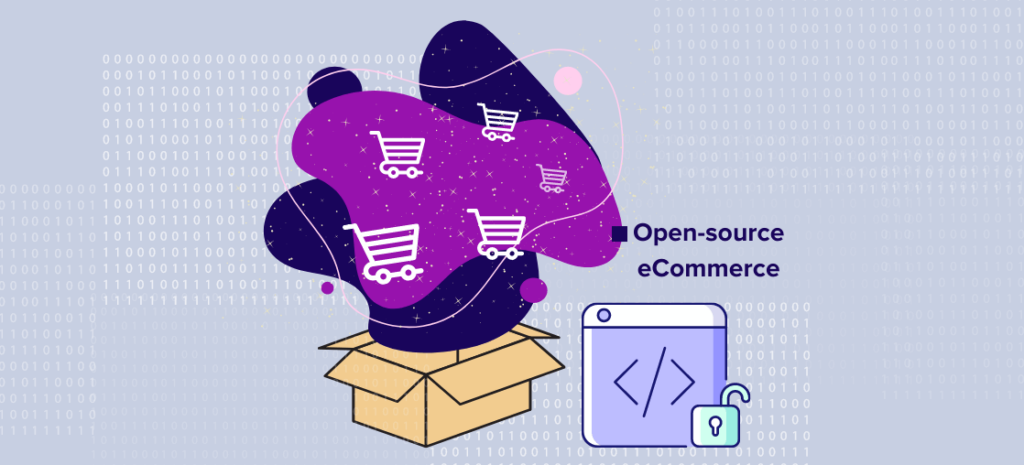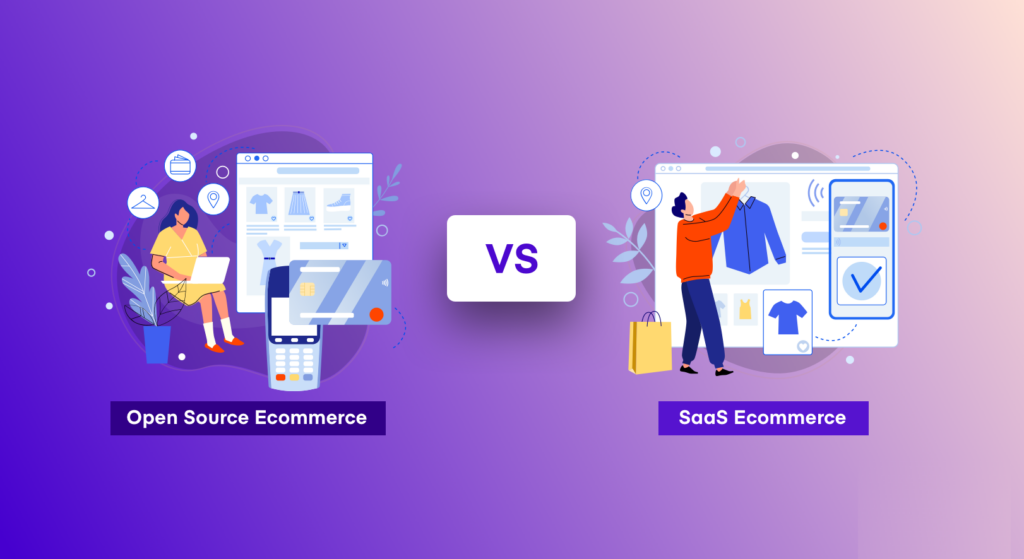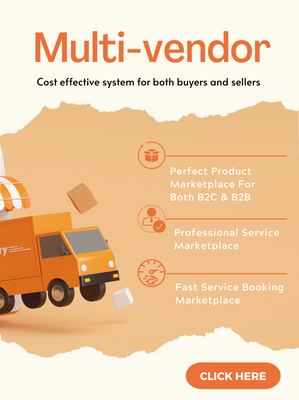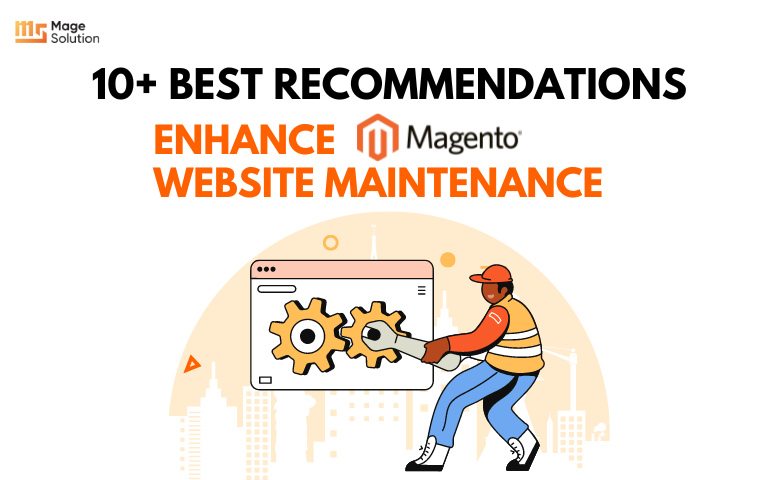Your cart is currently empty!
The main differences between SaaS vs Open Source eCommerce Platforms
In recent years, more and more companies want to convert their business into the digital world. Because the development of the Internet is rapid. Then it will help them have more opportunities to come closer to customers and foreign markets and enhance customer experience. Consequently, there are lots of options for you to choose an e-commerce platform to build your online store. However, deciding what is best for your business makes you confused. Among these platforms, SaaS and Open Source eCommerce are gaining more and more popularity. But both SaaS and Open Source eCommerce have unique features and operations, so we will distinguish them for you. Then you can know what is a suitable platform for your company.

An Overview of SaaS eCommerce Platforms
What is a SaaS eCommerce Platform?
Software as a service, or SaaS, is a service delivery model which develops a software-based website system. Therefore, you will need software because you cannot purchase or install the platform on individual computers. Instead, the user will have to host it via a cloud and third-party assistance. Then, you can run SaaS through our browsers and subscribe to the service by paying a charge monthly or annually.
Some types of SaaS eCommerce Platforms can see it:
- Shopify and Shopify Plus: Shopify is a subscription-based software that allows anyone to set up an online store. But they can also sell their products in physical locations using Shopify POS.
- BigCommerce: BigCommerce is a paid-for, ‘hosted’ eCommerce solution. It allows business owners to set up an online store and sell their products on the web. BigCommerce is a SaaS solution — you don’t own the software but pay a monthly fee.
- Volusion: Volusion is a full-featured eCommerce website builder providing web design, marketing, and other business services. Monthly plans, which vary in price depending on your demands, contain tools and services.
- Squarespace: Squarespace is a flexible website builder for creatives, bloggers, and even eCommerce site owners.
There are a few critical significant characteristics of SaaS:
- The service is purchased on a user subscription basis
- No additional hardware is required to be installed by the customer
- Updates are applied automatically without customer intervention

Some advantages and disadvantages you will face when using SaaS eCommerce Platforms
The benefits of SaaS eCommerce Platforms
Saving Time
With SaaS, users don’t need to buy or install the software. Because they will subscribe to the software on a monthly or annual basis. Then it will reduce installation and configuration time. Besides, thanks to the internet, subscribers can use relevant applications online, and data is saved automatically. Therefore, people only need a net connection and log-in information to access the new software. Moreover, you can access it from any location.
Scalability
Because the feature is cloud-based, SaaS systems allow users to scale and integrate with other similar systems easily. Therefore, it cuts down additional software or servers. SaaS suppliers create the server capacity available to the user and help you receive upgrades and updates. As a result, individuals have a ready-to-use application and save time and resources. Performance monitoring is a helpful tool for utilizing computer resources, and it makes sense to invest in them.
Easy to Use
The Internet and a variety of mobile devices can connect to SaaS programs. Recently, the quality and consistency of user interfaces have substantially increased, and the learning curve for adaptability has been reduced. Besides, beginners also know how to use it thanks to tutorials and guide from SaaS
Saving Costs
Because subscription fees are paid monthly and annually, businesses can be easier to afford. Besides, you can change or cancel the subscription freely. Moreover, the budget for infrastructure and hardware, as well as hiring staff to manage the application, will be reduced. SaaS also has lower maintenance costs because of the lower upfront costs.
Increasing Security
Data in SaaS is more secure than traditional systems because it is hosted in the cloud and backed up by the provider. Most data will be safe if a security breach occurs on the company server or a PC.
This is particularly beneficial because employees frequently utilize personal devices for office work, which are vulnerable to data loss. However, it is safe because the data is stored in the cloud rather than on the employee’s personal device.

The Disadvantages of SaaS eCommerce Platforms
Having no control over the source code and data
Companies won’t have the authority to own and control the website source code because SaaS is hosted by the cloud. Therefore, firms must rebuild from scratch on the new platform if they want to change media. Besides, companies can usually meet the situation of data loss or misalignment.
Numerous challenges are associated with not owning and controlling data, including integrating data across departments, customizing users, etc.
Poor scalability and flexibility
Customization and growth are currently restricted due to the website system’s reliance on the SaaS platform. SaaS platforms frequently cannot adapt when upgrading existing features and establishing new functions for the company’s development. Consequently, transferring media after a period of use is unavoidable, and this change will cost the organization time and money.
Usage costs increase over time
The overall cost of use can increase quickly if you use the payment monthly or yearly for a long time. In addition, the SaaS eCommerce Platform makes a profit on online sales.
An Overview of Open Source eCommerce
What is Open Source eCommerce?
Unlike the SaaS platform, Open Source allows people to customize and use source code freely. However, they must collaborate with professional developers or build a highly specialized in-house team to build a website system. To better understand, open-source eCommerce solutions can also be described as constructed cooperatively. Besides, the users of open-source eCommerce platforms are also supported by a committed community. To put it another way, open-source software is known for its adaptability and customizability.
Here are some examples of Open Source Ecommerce Platforms
- Magento: Magento is a feature-rich eCommerce platform solution with built-in PHP. It provides online sellers complete flexibility and control over their stores’ functionalities and appearance.
- WooCommerce – eCommerce> plugin for WordPress: WooCommerce is a free plugin. It is an open-source eCommerce plugin built for WordPress. Anyone can go in and audit, modify or extend the code.
- X-Cart: X-Cart is a PHP shopping cart e-commerce software platform. It lets online businesses process orders, track inventory, and manage all aspects of their online store.
- Prestashop: PrestaShop is a feature-rich, open-source e-commerce solution. The platform can be used to run stores in the cloud or on your own server.
- OpenCart: OpenCart is a free, open-source eCommerce platform that allows you to sell and buy things online. This means that OpenCart makes its source code available to modify and customize the web store.
These websites have gained more and more popularity thanks to the levels of customization provided.

Some advantages and disadvantages when using an Open Source eCommerce Platform
The Advantages of Open Source eCommerce Platform
Control the data and own the source code
The property is stored on a separate server system in an Open Source eCommerce Platform. Businesses have complete ownership and control over the source code and data on the system. As a result, enterprises need to pay development costs to use the source code while launching an eCommerce website. If you switch developers or platforms at this point, you can utilize the previous source code. Furthermore, security has been enhanced, resulting in fewer hacker assaults, server outages, and technical issues from employees and customers
Customize the interface to meet your requirements
They will have more customized choices when they use Open Source eCommerce Platforms to design their website’s interface. Therefore, it will help them increase brand identity and maximize revenue.
Currently, there are three basic methods for developing interfaces:
Use available themes: Businesses can choose and employ pre-existing themes from the market, development community, or cooperation unit, just as SaaS platforms. Because an expected UX/UI theme costs between $50 and $200 on average, this strategy will help businesses save money.
Customizing the interface depends on an existing theme: In this method, firms can design their own interface by rewriting the website’s code at the front end. Therefore, organizations will not only cut expenses but also express their own unique characteristics.
Create your own user interface: The interface should be built individually to properly present the brand on the website. This is often more expensive than using a theme, but it covers the company’s most precise and unique needs.
Full of features and add-ons
Regarding website system features, Open Source eCommerce Platforms are superior to SaaS platforms. Not only do they have essential functions, but Open Source eCommerce Platforms also have many advanced features. It can be a quick search, similar product suggestions, abandoned cart notifications, real-time products, etc.
In addition, Open Source eCommerce also has many add-ons that are improved, provided, and shared by the developer community.
Great flexibility
Since the source code belongs to the organizations, they bring up the functional system to date and build new features. Moreover, they can quickly grow the system to suit business demands and meet consumer needs. At once, a company can link with third-party utilities to run the system
The Disadvantages of Open Source eCommerce Platform
Require a professional team or experienced developer
It’s difficult to create “tailor-made” systems for each company with a system of diverse e-commerce features. Therefore, open-source e-commerce platforms often have high accuracy. As a result, a specialist team or development organization must have solid expertise and several years of experience to build and function properly.
Long time to set up
Open-source e-commerce platform deployment durations are usually longer than those of SaaS platforms. The typical time for an IT team to construct a website may be from 3 months to 1 year, up to the complexity of the functional system.
High cost of development
At first, an open-source platform is basically free to use. However, you need a whole e-commerce system, from a website to a mobile app. You have to devote a significant amount of time and effort. Interfaces and functionality will be designed by the in-house IT team. As a result, the initial cost of establishing an e-commerce website utilizing an open-source platform is relatively high. It is often with an average project costing $10,000.
The main differences between SaaS vs Open Source eCommerce

Go-to-Market Time
Overall, it is easy for users to install both SaaS and Open Source eCommerce. If SaaS platforms offer a free trial to get started, the open-source framework is free to install. However, open-source platforms need considerable time and knowledge to code to start and run a system. Moreover, the user must pay for hosting, security, and theme creation. On the contrary, SaaS platforms have a bright and user-friendly interface and available articles to support the user’s business. It means they look after the hosting and security, so you don’t have to worry about setting that up. As a result, you can shorten the time for setup and be ready for the market. In summary, a SaaS eCommerce platform will be a good choice if you want to start quickly.
Ongoing Maintenance
Because SaaS provides hosts, monitors, and upgrades software on an ongoing basis, you don’t need to worry about constant maintenance. Therefore, it won’t be your responsibility for performance, server issues, etc. Besides, you have supporters to help when something goes wrong
However, you must take care of maintenance or hire a development agency for Open Source platforms. Therefore, you’re in charge of the platform’s infrastructure and management. You’ll need to set up hosting and keep track of software updates and upgrades. If something doesn’t meet your demand, you must investigate and resolve the problem.
Some merchants may desire complete control over performance, site speed, and infrastructure development. Therefore, the SaaS platform will be more friendly between SaaS vs Open Source eCommerce.
Security / PCI Compliance
Security is always an essential issue with every company. When the speed of internet development increases quickly, hackers also appear more and more. This means you must safeguard your users’ data, especially information about payment. SaaS software providers will give a hand to assure security and PCI compliance for you. However, Open source platforms leave that to their users. Therefore, you’ll need to meet PCI compliance standards and catch up with any patches or bug fixes for your security firewall.
Customization / Features
Because of the structure of the SaaS platform, it will be impossible for you to customize as much as you want. Therefore, you only can change some layout templates, colors, positions, and visibility. Then to add features, you will need to pay more monthly
On the contrary, open-source systems are designed to allow for customization and encourage developers to adapt and extend the platform. This means that you have full access to change code, add features, or remove anything. Many Enterprise companies choose open-source platforms to create that one-of-a-kind personalized experience.
Commissions or Transaction Charges
Most SaaS-based eCommerce vendors charge by sale, transaction, or both. On some platforms, this can be as high as 10%. For example, Popular payment gateways, such as PayPal and Stripe, have bank fees. While other providers have established their own payment gateways with various advantages. You’ll have to purchase from those fees by upgrading your status subscription. You’ll realize you’ve lost a lot of money when you put it all up. Because they took a large amount of everything you made. Then there’s the shipping expense, which comes with limited options.
It’s worth noting that this may cause you to raise your product prices. Then it results in reduced sales and a loss of competitive edge open Source solutions. However, there is no commission to pay. Only your usual gateway fees will apply. You’ll deliver using your preferred shipping service, and the rest will be profit. Here is a quick summary to help you grasp the information about SaaS vs Open Source eCommerce:
Conclusion
Magesolution points out typical features of the Saas platform and Open source eCommerce through this article. Each platform will have benefits and challenges when you use it for your business. Through this characteristic, we built a table to compare both platforms, so you can choose what suits your business. If you still don’t know how to set up and run it smoothly, we are happy to be here as a partner to help you. With 14 years of experience in this field, we have profound knowledge and skilled staff to aid you in starting your business quickest. Besides, we provide solutions for eCommerce in different platforms like Magento, Shopify, Bigcommerce, and Woocommerce, which help you consider and choose what suits you. Contact us for more information, or use the service you want on the Magesolution website.



